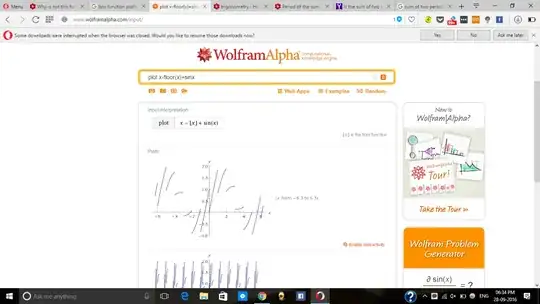The function is:
$f(x)= x-[x]+sinx$ where [x] is the greatest integer function.
The time period of $x-[x]$ is $1$ and $sin x$ is $2\pi$
And the time period of $f(x)$ is the LCM of the above given time periods(source)
So here,
$LCM(1,2\pi)=2\pi$
Therefore $f(x)$ must have $2\pi$ as it's time period.But if I plot is graph $f(x)$ doesnot look like a periodic function.Why?
